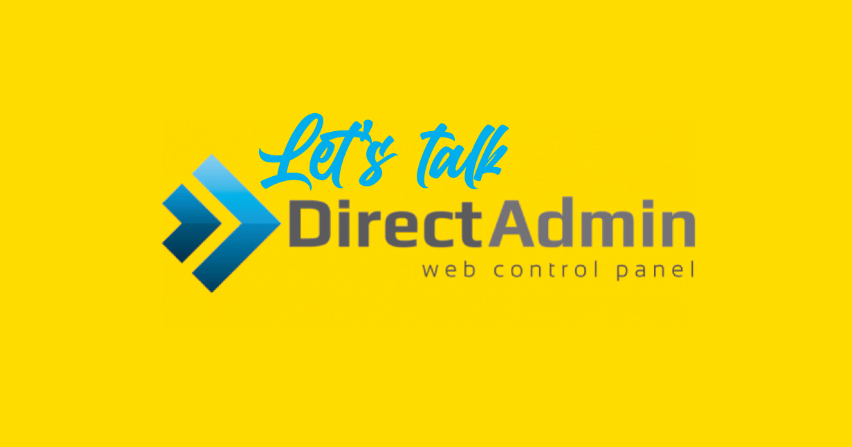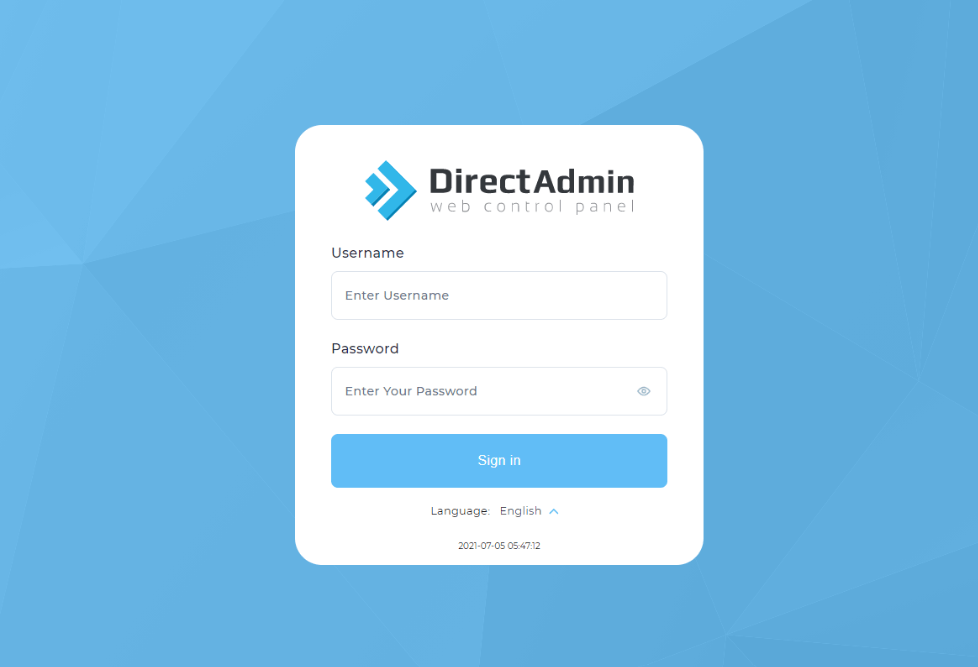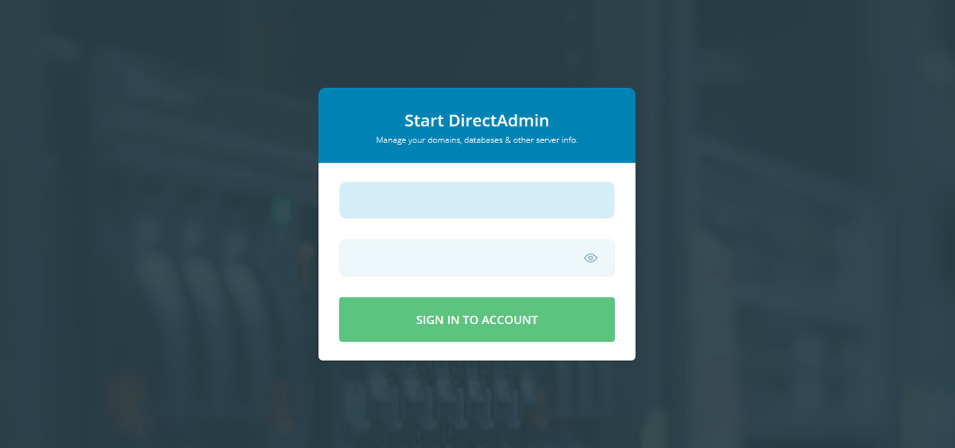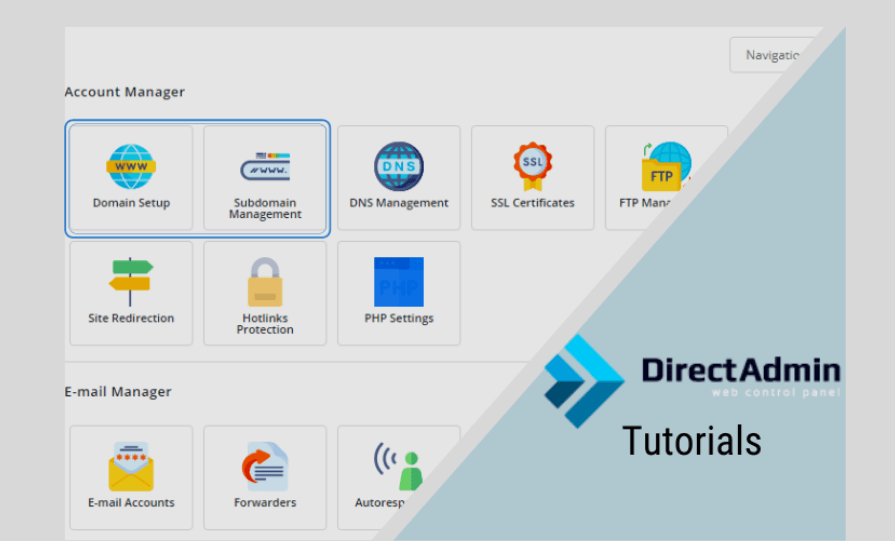For web hosting services, DirectAdmin is well acceptable among users because of its uncomplicated control panel and practical features. However, DirectAdmin installation may prove to be a daunting task to those people who are first-time server administrators. In this guide, you will know the key points to remember when installing DirectAdmin: Knowing about its requirements, preparing the server, selecting an exemplary method of installation, and securing the installation process at the end.
Understanding DirectAdmin and Its Requirements
DirectAdmin, therefore, comes across as a singular all-in-one web hosting control panel that enhances usability in that users can conveniently manage their websites as well as their email accounts and databases, among other features. For a smooth installation process, it is critical to first verify that your server aligns with DirectAdmin’s system requirements.
These prerequisites are pivotal for ensuring compatibility and optimal performance. Essential requirements include a clean installation of an operating system that DirectAdmin supports, a designated static IP address to facilitate reliable server access, and sufficient RAM and disk space to accommodate the control panel’s operations and hosted services.
It’s also imperative to check for specific version compatibility and any additional dependencies that may be required by the operating system or DirectAdmin itself. Adhering to these criteria shall help set a path for a more complicated and frequently less problematic acquisition of the web hosting environment, thus creating a good foundation for the successful implementation of the web host.
Preparing Your Server for DirectAdmin Installation
Preparing your server before installing DirectAdmin is an imperative measure that highlights the significance of this stage. This is a set of actions that prepare your server and make it ready for DirectAdmin. First of all, you need to ensure that the operating system of the computer is well-updated. Running the latest version eliminates potential conflicts and ensures that DirectAdmin can utilize the latest features and security updates the OS provides.
Next, installing the necessary software packages is critical. DirectAdmin may require specific packages to be present on your server for it to function correctly. Identifying and installing these packages beforehand streamlines the installation process. Additionally, setting up a firewall and configuring it properly is an essential step. Adjust your firewall settings to allow DirectAdmin to communicate through its required ports. This action ensures that incoming and outgoing connections are not obstructed, facilitating a smooth communication channel for DirectAdmin’s operations.
It’s also advisable to conduct a final check to confirm that all system requirements are met, ensuring that there are no remaining obstacles that could hinder the DirectAdmin installation. This preparatory phase is critical to a smooth and successful DirectAdmin setup.
Choosing the Right Installation Method for Your Needs
The selection of an installation method for DirectAdmin hinges on the server administrator’s expertise level and the unique requirements of their server environment. For those who want to make settings simple and quick, the auto-installer script is highly recommended. This helps reduce procedural interferences, which usually come with errors that may be fatal to the entire process. More seasoned users or those requiring custom configurations might opt for the manual installation via SSH.
This method affords greater control over the installation process and allows for specific customization that automated scripts cannot offer. Alternatively, leveraging a pre-configured server image with DirectAdmin installed is an excellent time-saver for rapid deployment, especially beneficial in environments where speed is of the essence.
Unless the commenter can provide a solution that fits well with the particular server you are using or you’re comfortable with server management, it is necessary to focus on the details in selecting the most appropriate method. Both have their advantages; making the right choice directs to a more efficient installation solution tailored to the project’s particular needs.
Step-by-Step Guide to Installing DirectAdmin
Begin by navigating DirectAdmin’s official website to download the latest installation script suited for your operating system. Ensure you’re logged in as a root user before proceeding to avoid permission issues. Open your terminal and navigate to the directory to download the script. Use the wget or curl command to download the installation script directly from DirectAdmin’s website. Once downloaded, change the script’s permissions to make it executable by running the command `chmod +x setup.sh` (replacing setup. sh with the actual script name).
Next, initiate the script by typing `./setup.sh` into your terminal. This command will launch the DirectAdmin installation process. You’ll be prompted to enter several pieces of information, including your client ID, license ID, and server’s hostname. Ensure that the information entered matches the details provided by DirectAdmin upon purchasing your license.
The next step in the script will be to download and install DirectAdmin and its dependencies to your server. The result may take a while to load depending on the speed of the server and or the connection available. Once the installation is complete, the script will display a success message, initial login credentials, and a link to access the DirectAdmin control panel.
Navigate to the provided URL and log in with the credentials to finalize the installation. From here, you’re set to configure DirectAdmin according to your server’s needs.
Post-Installation Setup and Configuration
Following the installation of DirectAdmin, it’s essential to engage in post-installation setup and configuration to tailor the control panel to your requirements. As explained earlier, this stage extends the previous step because it entails a deeper assessment of how DirectBoard can support you, particularly when hosting. Begin with setting up the initial users for the project, which can be the members of your team or the clients whose accounts you perform; make sure that each has appropriate permissions.
Yet another vital arrangement is the email settings to control communication effectively. Besides, DirectAdmin has provisions for the integration of many plugins and modules which aids in enhancing its capability as well as usability. It might be wise to obtain security extensions, website builders, or other mechanisms that can assist in creating more secure hosting.
Going deeper into the options in the settings, you might sort out server options, performance characteristics, and security protocols. What is important to stress here is that the procedure of customization is the measure to unleash DirectAdmin’s full capabilities to the maximum, and makes web hosting management competent and efficient at the same time.
Securing Your DirectAdmin Installation
Ensuring the security of your DirectAdmin installation is paramount to maintaining a protected hosting environment. Begin by avoiding the use of plain passwords and applying this restriction to the admin account as well to protect against brute attacks. Two-factor authentication (2FA) requirements prompt the users to provide two proofs of their identity before entering. Regularly updating DirectAdmin and all associated software is crucial to protect against known vulnerabilities and exploits. Incorporate SSL certificates for all hosted websites and the DirectAdmin panel to secure data in transit.
Additionally, configure your server’s firewall only to allow traffic through necessary ports, and consider using fail2ban or similar software to block IP addresses that exhibit suspicious behavior automatically. Regularly review your server’s access logs for any unusual activity that could indicate a security breach. Taking these proactive measures helps create a fortified barrier against potential security threats, safeguarding your server and the data it hosts.
Troubleshooting Common DirectAdmin Installation Issues
Navigating the hurdles of DirectAdmin installation requires a strategic approach to overcome common challenges. One frequent issue arises from incorrect server prerequisites, which may lead to failed installations. Verify your server meets all specified requirements detailed in the “Understanding DirectAdmin and Its Requirements” section to circumvent this problem. Another typical obstacle involves errors during script execution, which often stem from downloading issues or incorrect permission settings. Ensuring the installation script is fully and correctly downloaded, followed by setting the appropriate executable permissions with `chmod +x setup.sh`, can alleviate these issues.
Additionally, configuration errors with DirectAdmin post-installation might emerge, usually due to incorrect input during the setup phase. Revisiting the configuration settings and double-checking the input values against your DirectAdmin license information can help rectify these errors. Encountering issues with operating system compatibility signifies the necessity to confirm the OS version against DirectAdmin’s supported list.
For issues that are not resolved by DirectAdmin commands or for problems that are a little delicate, using the DirectAdmin forums and documentation is a valid fountain of knowledge and a good source of the user-to-user and DirectAdmin community support involving knowledge base from people who have confronted similar issues.
Maximizing Your DirectAdmin Experience
Embracing DirectAdmin fully involves delving deeper into its vast features and continuously seeking ways to enhance server efficiency and user experience. One of the more pertinent areas when it comes to fully utilizing DirectAdmin is to understand its extended features. Investigate modules that allow for job scheduling and other repetitive jobs, read more about command-line-specific options, or use the API to hook into external services. It is preferable to proactively identify and rectify problems because this eliminates issues that hinder good management while creating opportunities for scalability.
Another significant procedure in promoting your DA experience is server settings optimization, which has to be performed as frequently as possible. This entails issues like tuning PHP settings and databases and optimizing web servers for content delivery. Such adjustments relate to the shorter time it takes for a website to load, which is an essential factor in the perception by users and search engines.
It is also essential to know the latest updates on DirectAdmin. Each release does not only contain changes in the security system and fixes for already known problems but also brings enhancements that can be useful for improving the conditions of website hosting. Engaging in the DirectAdmin forums and other social media can also give additional information, tips, and tricks to other users and developers using the panel and provide further details on how to better work with the control panel.
When interacting with these aspects, you orient yourself to the organizational and constructive use of DirectAdmin and the formation of a qualitatively different, fast, and safe web environment for hosting.




